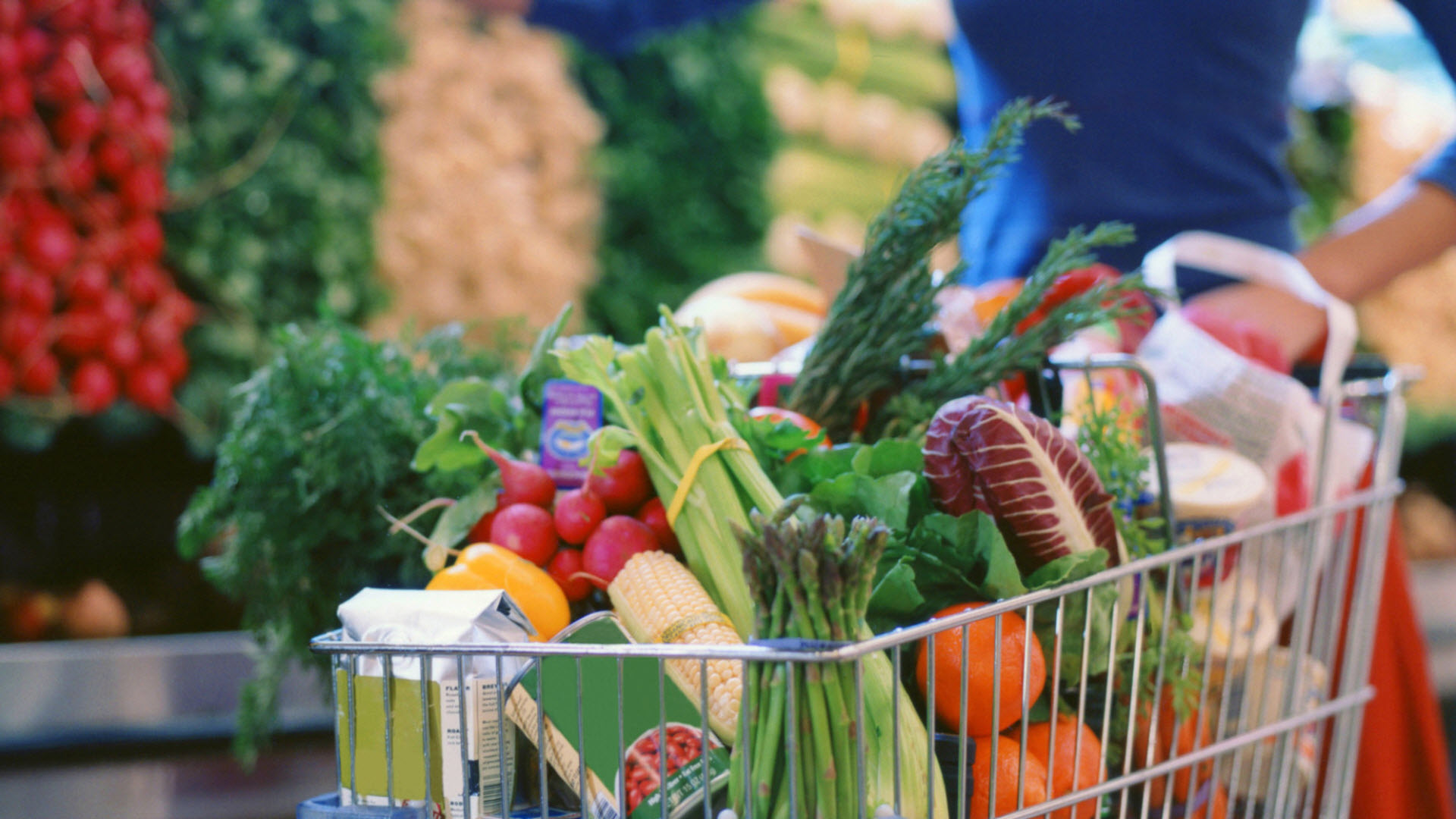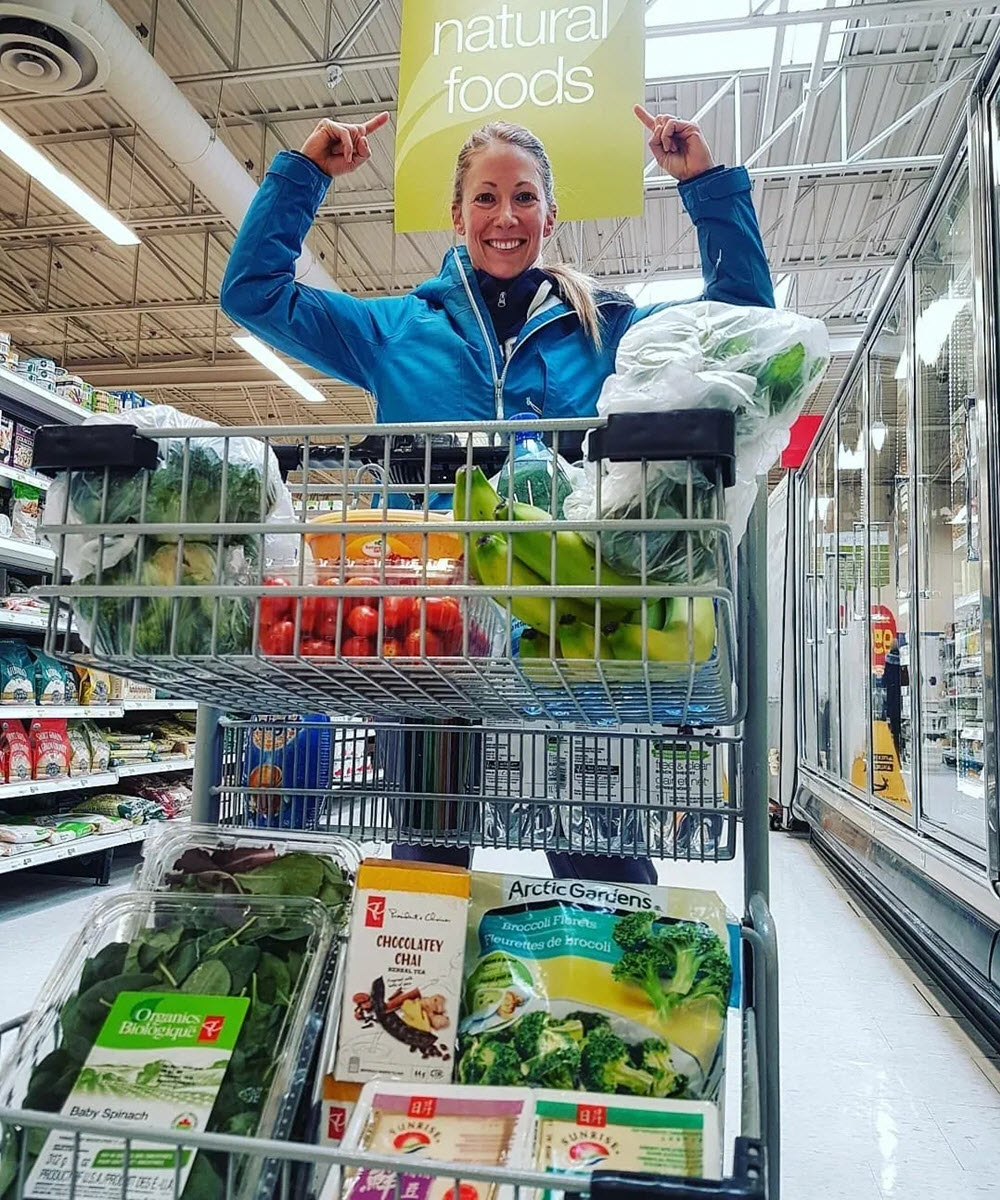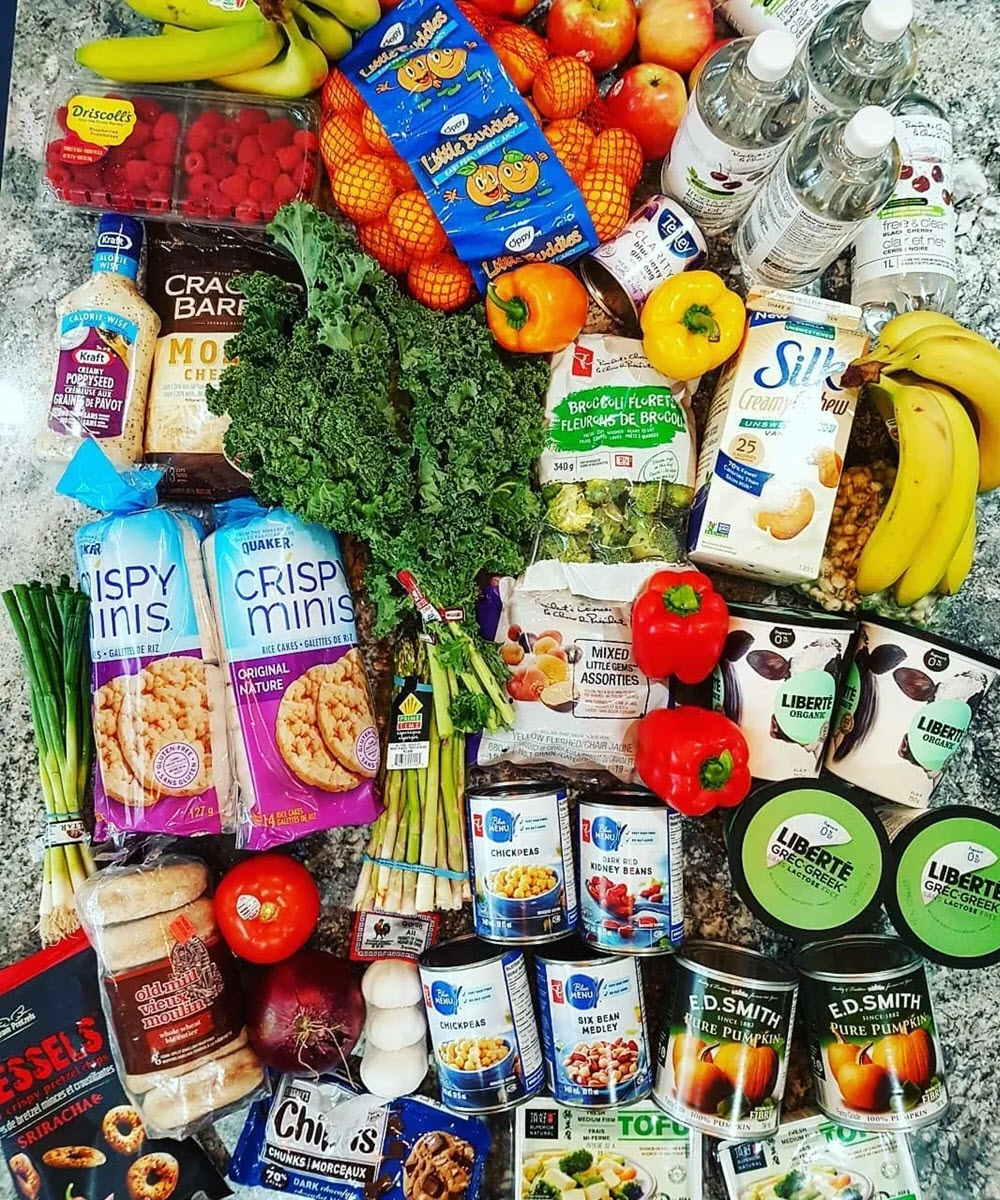
Grocery Shopping Tips During COVID-19
The COVID-19 pandemic has changed the way we shop for groceries, with more people now shopping online. In addition to saving time, online grocery shopping is convenient. When you’re out of stock of something or you think of an item you need, simply add it to your online cart. However, this method still requires willpower and making smart choices, and being attentive to the details of your purchases.
Plan your recipes for the week before you start piling items into your cart. This will make it easier to resist the temptation to select meals and snacks that you know are unhealthy.

It’s important to read the food labels. According to a 2018 survey from the International Food Information Council, 66 per cent of in-person shoppers said they read nutrition information before buying items, while that figure was only 48 per cent for online shoppers. The picture of a frozen pizza may look tantalizing on your screen, and the convenience of simply putting it in your oven may be appealing, but you may not know it is loaded with calories, salt and ingredients you don’t recognize unless you click for additional information.
You also need to know the quantity of the items you purchase – for example, how many grams your tub of yogurt contains and approximately how many servings it will yield. It also gives you an appreciation for how eating healthy doesn’t need to be expensive. For example, you can scoop up a one-kilogram bag of organic 100% whole grain steel cut oats for about $4. If you have one cup for breakfast, it works out to 64 cents per meal.
Be prepared that some of your items might be out of stock. When online shopping, your grocery store might give you the option to accept or decline substitutions, and you may be able to indicate preferences. Think about what substitutions go well with your planned recipes in case you can’t get all the items you selected.
The equivalent of shopping in-person to pick up a last-minute item or two isn’t an option online. Your grocery store might have a minimum order value in the range of $30-$35. Also, it may take some time for your purchases to be gathered and made available for pick up or delivery, so place your order well in advance of when you’ll actually need the items.
Due to the economic consequences of the pandemic, many people are grocery shopping on a tight budget these days. A healthy and inexpensive choice is to buy ingredients for dishes you can make from scratch rather than buying processed meals at the store. That includes your snacks, dressings, dips and sauces – items that add up in the grocery bill and in the calories.
Fill your cart with fruits, vegetables, whole grains such as oatmeal and brown rice, beans, lentils, and eggs. A variety of these inexpensive items will give you a lot of protein and fiber, which will fill you up, and their strong nutritional content will put you in a positive frame of mind to cope with the stress and uncertainty of the pandemic.

Sure, cooking from scratch takes time. But the more of it you do, the speedier you’ll get, and it won’t take you long to discover how beneficial it is. You may have more free time than usual, with the pandemic shutting down gatherings with friends and many of our favorite activities, so spend some of that time learning new recipes and doing more cooking. When you plan your next grocery shop, think of the ingredients you need to achieve optimal health.
If you need more support with grocery shopping, meal planning, and better eating habits overall, get in touch with us today!

Grocery Shopping Tips During COVID-19
The COVID-19 pandemic has changed the way we shop for groceries, with more people now shopping online. In addition to saving time, online grocery shopping is convenient. When you’re out of stock of something or you think of an item you need, simply add it to your online cart. However, this method still requires willpower and making smart choices, and being attentive to the details of your purchases.
Plan your recipes for the week before you start piling items into your cart. This will make it easier to resist the temptation to select meals and snacks that you know are unhealthy.

It’s important to read the food labels. According to a 2018 survey from the International Food Information Council, 66 per cent of in-person shoppers said they read nutrition information before buying items, while that figure was only 48 per cent for online shoppers. The picture of a frozen pizza may look tantalizing on your screen, and the convenience of simply putting it in your oven may be appealing, but you may not know it is loaded with calories, salt and ingredients you don’t recognize unless you click for additional information.
You also need to know the quantity of the items you purchase – for example, how many grams your tub of yogurt contains and approximately how many servings it will yield. It also gives you an appreciation for how eating healthy doesn’t need to be expensive. For example, you can scoop up a one-kilogram bag of organic 100% whole grain steel cut oats for about $4. If you have one cup for breakfast, it works out to 64 cents per meal.
Be prepared that some of your items might be out of stock. When online shopping, your grocery store might give you the option to accept or decline substitutions, and you may be able to indicate preferences. Think about what substitutions go well with your planned recipes in case you can’t get all the items you selected.
The equivalent of shopping in-person to pick up a last-minute item or two isn’t an option online. Your grocery store might have a minimum order value in the range of $30-$35. Also, it may take some time for your purchases to be gathered and made available for pick up or delivery, so place your order well in advance of when you’ll actually need the items.
Due to the economic consequences of the pandemic, many people are grocery shopping on a tight budget these days. A healthy and inexpensive choice is to buy ingredients for dishes you can make from scratch rather than buying processed meals at the store. That includes your snacks, dressings, dips and sauces – items that add up in the grocery bill and in the calories.
Fill your cart with fruits, vegetables, whole grains such as oatmeal and brown rice, beans, lentils, and eggs. A variety of these inexpensive items will give you a lot of protein and fiber, which will fill you up, and their strong nutritional content will put you in a positive frame of mind to cope with the stress and uncertainty of the pandemic.

Sure, cooking from scratch takes time. But the more of it you do, the speedier you’ll get, and it won’t take you long to discover how beneficial it is. You may have more free time than usual, with the pandemic shutting down gatherings with friends and many of our favorite activities, so spend some of that time learning new recipes and doing more cooking. When you plan your next grocery shop, think of the ingredients you need to achieve optimal health.
If you need more support with grocery shopping, meal planning, and better eating habits overall, get in touch with us today!














